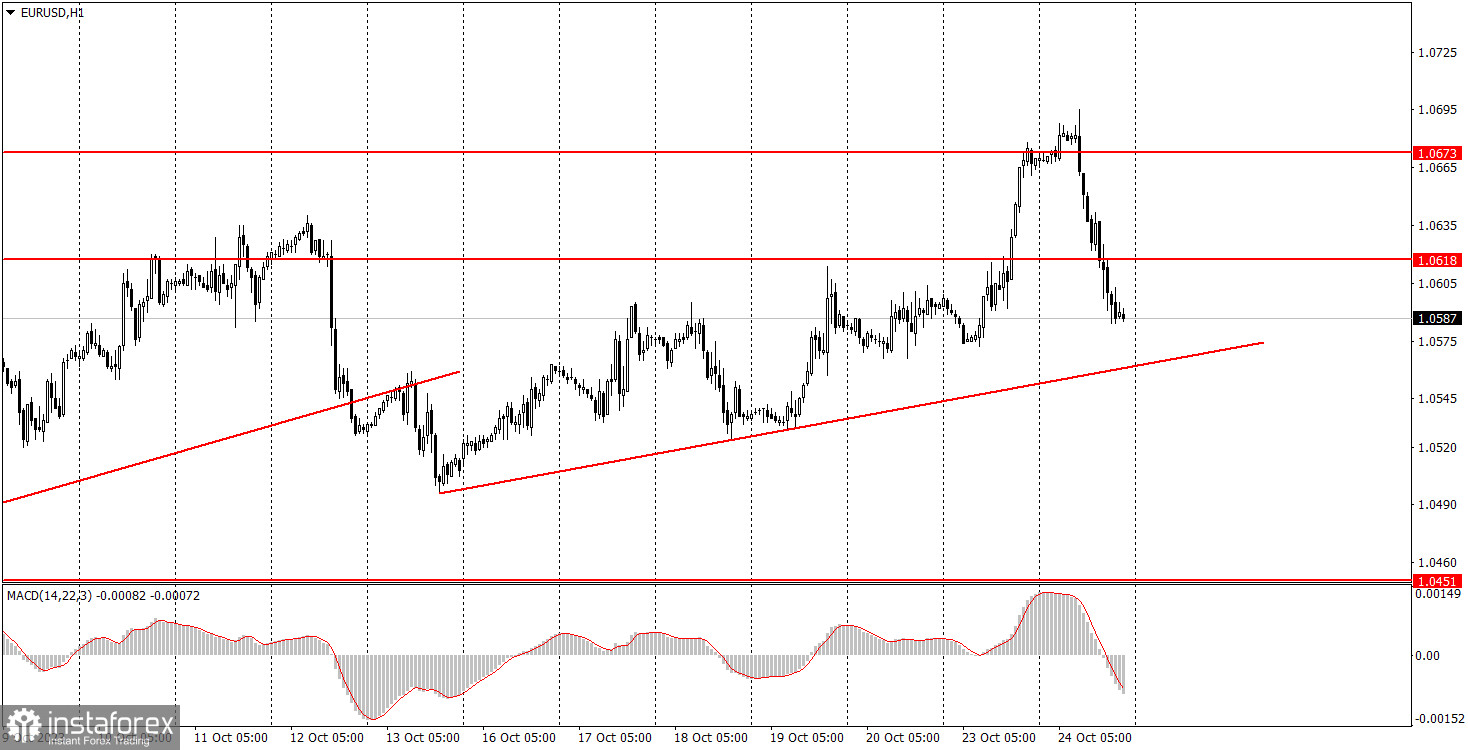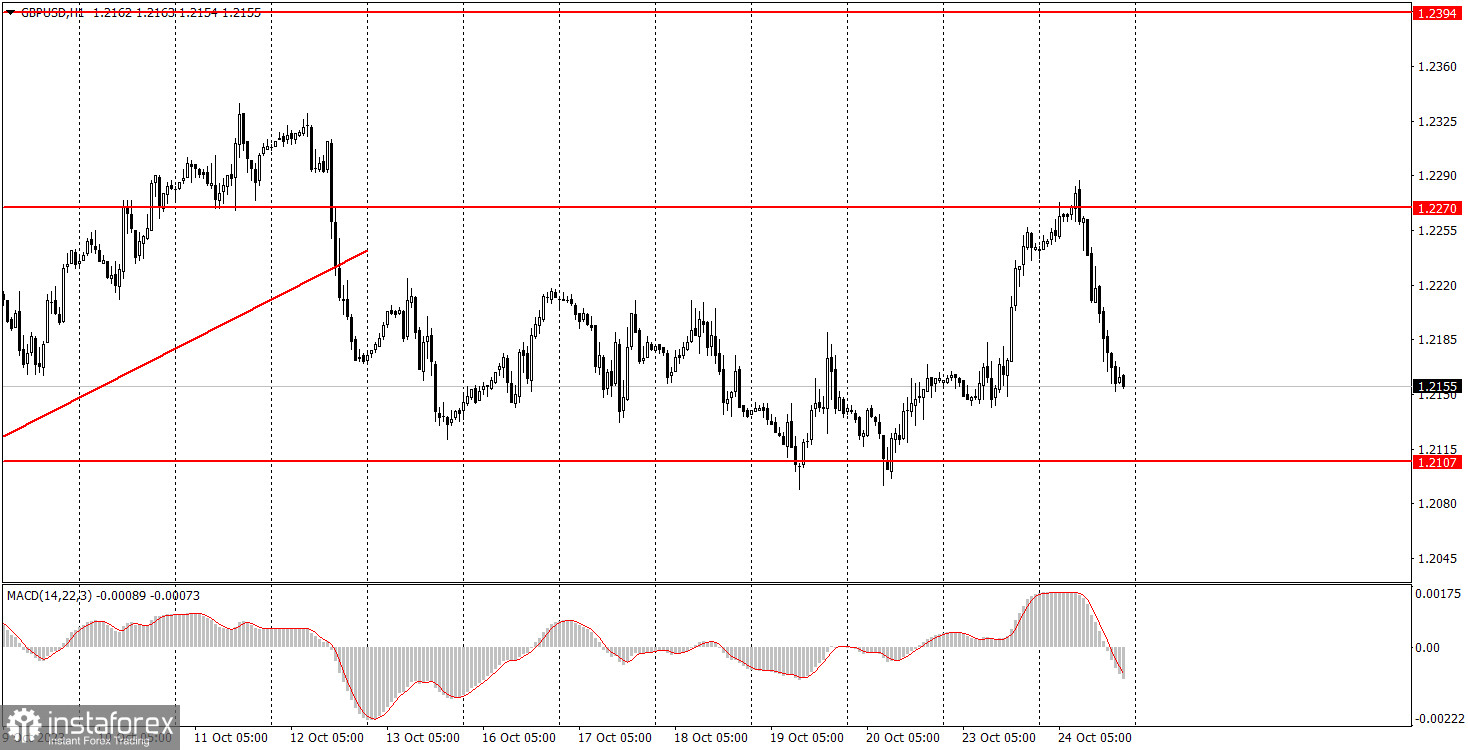Analysis of macroeconomic reports:

Hardly any macroeconomic events on Wednesday, but the last two trading days have shown us that the market is currently trading purely on technicals. On Monday, both currencies (pound and the euro) did not have any reason to rise, and on Tuesday, there was no reason for them to fall. Therefore, we might see strong movements on Wednesday, even though it's unlikely and perhaps unpleasant for the market to trade continuously in such a manner. The only report of the day is the US new home sales, which is considered secondary of importance. We do not expect this particular report to move the market.
Analysis of fundamental events:

There are two fundamental events on Wednesday. European Central Bank President Christine Lagarde and Federal Reserve Chair Jerome Powell will both speak. We don't anticipate any significant information from Lagarde ahead of the ECB meeting. From Powell, the market might receive interesting information regarding inflation, the economy, or monetary policy, but at the same time, the Fed chair already shared some information last week. It's unlikely that every single one of his speeches will be accompanied by crucial statements. In reality, his remarks weren't particularly loud last week, but they did move the market.
General conclusion:
No crucial reports on Wednesday, but we can look forward to the speeches. Therefore, hypothetically, the market could receive important information, and we could witness a strong reaction. Therefore, you should be cautious during Powell's and Lagarde's speeches, at the very least, with stop-loss orders in place for open trades.
Basic rules of a trading system:
1) Signal strength is determined by the time taken for its formation (either a bounce or level breach). A shorter formation time indicates a stronger signal.
2) If two or more trades around a certain level are initiated based on false signals, subsequent signals from that level should be disregarded.
3) In a flat market, any currency pair can produce multiple false signals or none at all. In any case, the flat trend is not the best condition for trading.
4) Trading activities are confined between the onset of the European session and mid-way through the U.S. session, post which all open trades should be manually closed.
5) On the 30-minute timeframe, trades based on MACD signals are only advisable amidst substantial volatility and an established trend, confirmed either by a trend line or trend channel.
6) If two levels lie closely together (ranging from 5 to 15 pips apart), they should be considered as a support or resistance zone.
How to read charts:
Support and Resistance price levels can serve as targets when buying or selling. You can place Take Profit levels near them.
Red lines represent channels or trend lines, depicting the current market trend and indicating the preferable trading direction.
The MACD(14,22,3) indicator, encompassing both the histogram and signal line, acts as an auxiliary tool and can also be used as a signal source.
Significant speeches and reports (always noted in the news calendar) can profoundly influence the price dynamics. Hence, trading during their release calls for heightened caution. It may be reasonable to exit the market to prevent abrupt price reversals against the prevailing trend.
Beginning traders should always remember that not every trade will yield profit. Establishing a clear strategy coupled with sound money management is the cornerstone of sustained trading success.
 English
English 
 Русский
Русский Bahasa Indonesia
Bahasa Indonesia Bahasa Malay
Bahasa Malay ไทย
ไทย Español
Español Deutsch
Deutsch Български
Български Français
Français Tiếng Việt
Tiếng Việt 中文
中文 বাংলা
বাংলা हिन्दी
हिन्दी Čeština
Čeština Українська
Українська Română
Română

